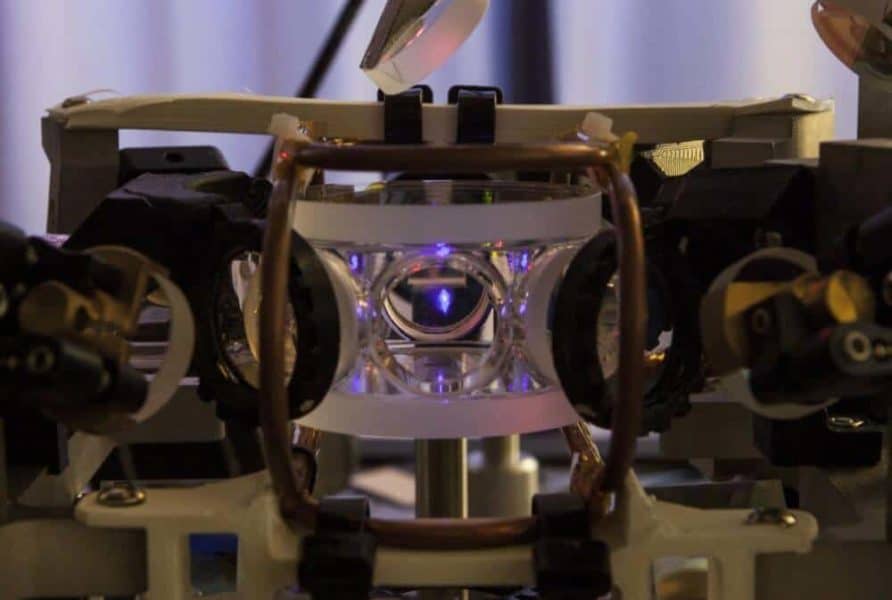The emerging domain of parallelized quantum information processing opens up new possibilities for precise measurements, communication and imaging. Precise control of multiple stored photons allows efficient handling of this subtle information in large amounts. In the Quantum Memories Laboratory at Faculty of Physics, University of Warsaw a group of laser-cooled atoms has been used as a memory which can store simultaneously up to 665 quantum states of light. The experimental results have been published in a prestigious Nature Communications journal.
Every information processing task requires a memory. As any classical computer cannot exist without a RAM memory, quantum computer could not be built without a quantum memory. Quantum memory is a device capable of storage and on demand retrieval of quantum states. The key parameter of such memory is its capacity, in other words the number of qubits (quantum bits) which the memory can effectively process. Simultaneous operation on many qubits is a key to efficient quantum parallel computation, providing new possibilities in the fields on imaging or communication.
Regardless of significant efforts, the on demand generation of many photons remains a key challenge for many experimental groups dealing with quantum information. For a recently widely-used method of multiplexing many single-photon emitters into one network the complexity of experimental systems grows unfavorably with its advantages. Using a quantum memory on the other hand one can generate a group of a dozen photons within seconds rather than years. Among many methods of encoding information about single photons in a quantum memory the spatial multiplexing aided by a single-photon sensitive camera stands out as an effective way to obtain high capacity at low cost.
In the Quantum Memories Laboratory (Faculty of Physics, University of Warsaw) such high-capacity memory has been successfully built. The system now holds a world-record of the largest capacity, as other experimentalists can only harness tens of independent states of light. The heart of the constructed setup comprises a so-called magneto-optical trap (MOT): a group of rubidium atoms inside a glass vacuum chamber is trapped and cooled by lasers in the presence of magnetic field to about 20 microkelvins. The memory light-atoms interface is based on off-resonant light scattering. In the write-in process the cloud of atoms is illuminated by a laser beam, resulting in photon scattering. Each scattered photon is emitted in random direction and registered on a sensitive camera. The information about scattered photons is stored inside the atomic ensemble in the form of collective excitations – spin-waves which can be on demand retrieved as another group of photons. By measuring correlations between emission angles of photons created during the write-in and read-out process we certify that the memory is indeed quantum and that the properties of generated state of light fail to be described by classical optics. The prototype quantum memory from Faculty of Physics at University of Warsaw now takes two optical tables and functions with the help of nine lasers and three control computers.
The quantum memory created using the funding of National Science Center (Poland) “PRELUDIUM” and “OPUS” project as well as Ministry of Science and Higher Education “Diamentowy Grant” project stands out for one more reason. The quantum information about all stored photons resides in a single cloud of cold atoms, and each atom takes part in the storage of each photon, making the memory resilient to a decoherence. This has been confirmed by observing quantum interference of two distinct excitations (differing by just a single quantum number). “This will allow even more complex manipulations of the atomic state, finally to prepare quantum states of light with accurately controlled parameters” – explains prof. Wojciech Wasilewski, head of Quantum Memories Laboratory.
If our reporting has informed or inspired you, please consider making a donation. Every contribution, no matter the size, empowers us to continue delivering accurate, engaging, and trustworthy science and medical news. Independent journalism requires time, effort, and resources—your support ensures we can keep uncovering the stories that matter most to you.
Join us in making knowledge accessible and impactful. Thank you for standing with us!

